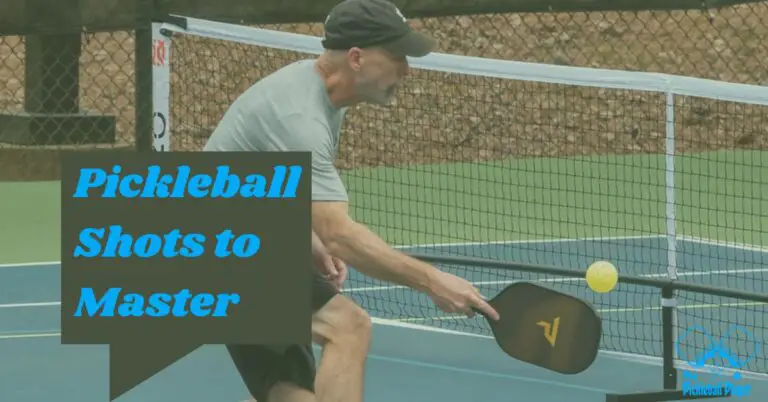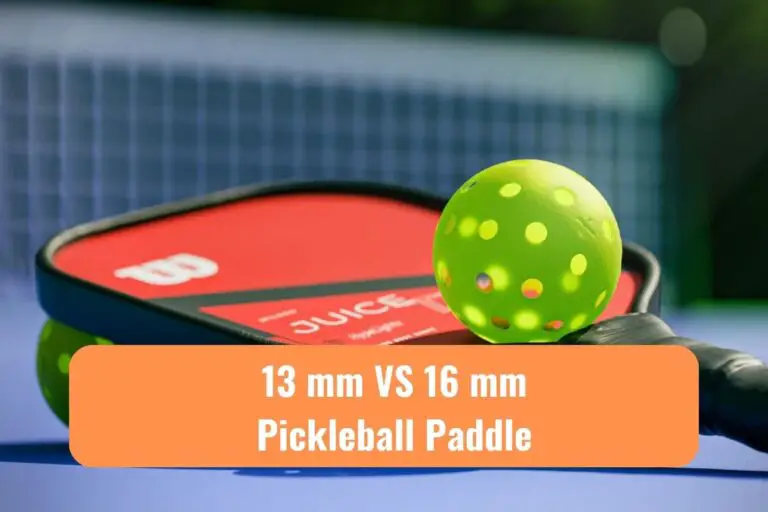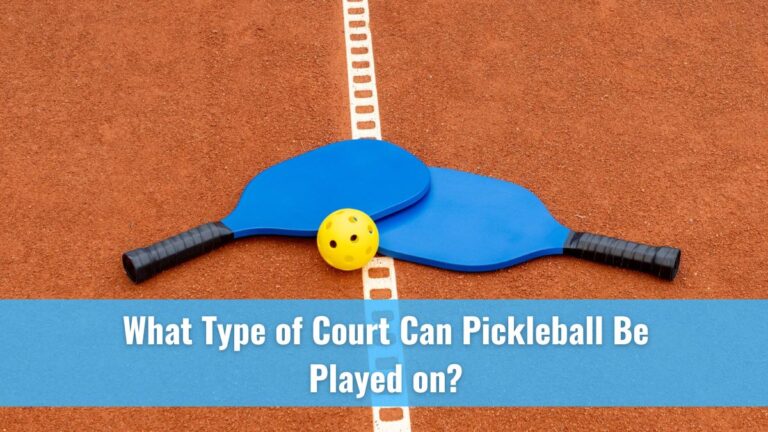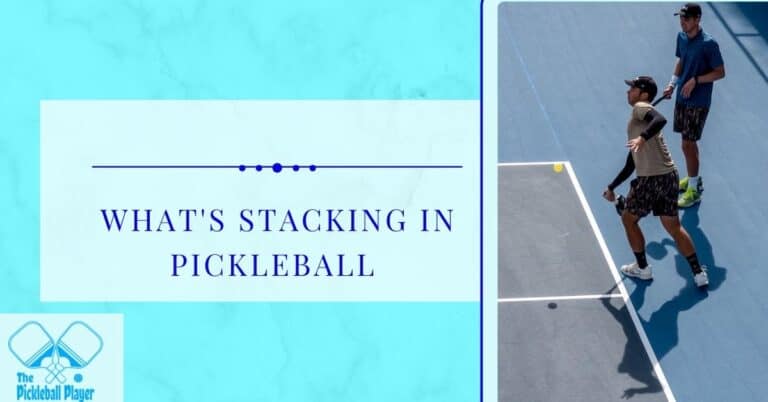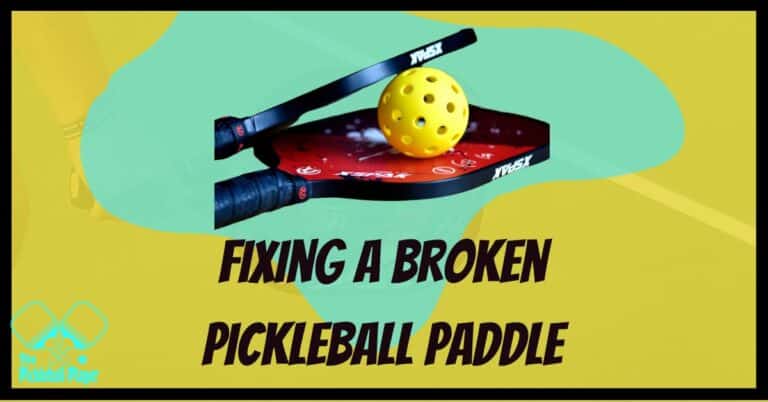Can You Switch Hands in Pickleball? Answered!
One of the most debated questions that frequently gets asked by pickleball players is, “Can you switch hands in pickleball?”
Different pickleball players offer different opinions regarding this question. While this technique doesn’t sit right with a few players, many others seem to be quite fond of it and use it as a way of effortlessly increasing their reach by hitting forehand shots on either side.
In this article, we will answer if it is legal to switch hands in pickleball, elaborating on the benefits and drawbacks of switching hands. We also cite examples of pro players who use this technique in tournaments to hit winning shots.
Table of Contents
- Can You Switch Hands in Pickleball?
- Should You Switch Hands in Pickleball?
- Advantages of Switching Hands
- Disadvantages of Switching Hands
- When Should You Switch Hands?
- Tips to Become a Pro at Hand Switching
- The Bottom Line
Can You Switch Hands in Pickleball?
Many players have a misconception that switching the paddle from one hand to another during pickleball is not legal. However, this is far from the truth because there is no such rule that prohibits players from switching hands.
In fact, if you have a look at the official USAPA rulebook, you’ll find out that switching hands is allowed, just as stacking is perfectly legal. That means depending on the situation you can go for right-handed shots, left-handed shots, and even double-handed shots without worrying about breaking rules.
However, you might see a few players discouraging the use of this technique, especially among non-ambidextrous players. This is because shifting the paddle into their non-dominant hand tends to slow them down.
Should You Switch Hands in Pickleball?
Switching hands during pickleball to go for a more powerful forehand shot with your off-hand rather than a backhand shot with your dominant hand comes with its own set of advantages and disadvantages.
To most pickleball players, this skill comes naturally as they instinctively switch hands to tackle a shot requiring more reach. Moreover, professional players like Rick Whitsken, Enrique Ruiz, and Wes Gabrielson are famous for perfectly employing this technique in big games.
Whether you should switch hands or not come down to the fact that how effectively you can use this skill to your advantage.
Advantages of Switching Hands
Switching hands during pickleball gives you an upper hand over your opponent.
1. Increased Reach
The major benefit offered by this technique is an extended reach. The additional reach that you get with switching hands lets you cover more court on both extremes. This proves especially favorable in a singles game. And if you play singles, you should consider getting a good pickleball paddle for singles.
2. More Power and Control
Switching hands lets you hit forehand shots instead of backhand shots. This provides a fairly unique advantage, as many players feel more comfortable when hitting forehand shots. Because of this, they can hit precisely controlled, powerful shots.
Additionally, for most players, backhand shots tend to be weak and inaccurate.
3. Requires Less Mobility
Switching hands in pickleball can be particularly advantageous for older players, who have limited mobility and cannot move fast enough to reach the ball in time. This technique also saves you time and lets you instantly return the opponent’s shot.
4. Confuses Opponent
When you swiftly switch hands and quickly return your opponent’s shot that was targeted at your weak, uncovered area of the court, it catches the opponent off-guard. So, they might struggle with the next shot.
Disadvantages of Switching Hands
While switching hands might prove useful in certain situations, it sometimes does more bad than good. Especially, players who are not ambidextrous find it difficult to manage forehand shots with their non-dominant hands.
1. Not Suitable For Fast Exchanges
Applying this technique when caught in a fast exchange at the kitchen line is very difficult for players who lack dexterity and quick reflexes with non-dominant hands. In such a situation, it is better to go for backhand shots with the hand already being used.
2. Paddle Drop
If you try switching hands during pickleball without having sufficient practice, you might not be able to transfer the paddle properly and end up dropping it. This way instead of looking like a pro player you’ll make a fool out of yourself.
3. Confusion in Doubles
In a double game, switching hands could create confusion with your partner, leading to a mishit. If you instinctively switch hands to hit a middle shot that your partner is already aiming for with his dominant hand, you might end up clashing your paddles and losing an incredibly easy shot.
When Should You Switch Hands?
Although it is important for you as a pickleball player to be able to hit forehand shots with your non-dominant hand, you shouldn’t switch hands for every shot. The best way to know when to switch is to gauge the situation and play accordingly.
The perfect time to go for it is when you know you have enough time to switch and also need a bit of extra reach on your weak side.
Ambidextrous players can easily switch hands and hit wonderful shots with both hands. Also, players with no prior experience with racket sports like tennis or badminton tend to switch hands as they are not comfortable with backhand shots.
Tips to Become a Pro at Hand Switching
- As the saying goes: practice makes a man perfect, practice forehand shots with your non-dominant hand until it becomes second nature to you. You can practice against a wall, a ball machine, or an actual partner. This will help to strengthen the neuronal pathways that control your non-dominant hand, letting you use it effectively.
- Another useful tip to quickly switch hands is to grip the paddle with both hands. This way, you won’t have to transfer the paddle from one hand to another, but just let go of one hand.
The Bottom Line
Hand switching in pickleball is a technique that could give you an edge over your opponent in pickleball or, if not employed wisely, could prove disastrous. Nevertheless, switching hands is no rocket science and if used properly and at the right moment can give you advantages like added reach and more controlled, powerful forehand shots.
Thus, if you feel more comfortable with forehand shots and backhand shots that seem inconvenient, then you should consider this technique. And according to the rules, you can switch hands in pickleball. It’s perfectly legal.

